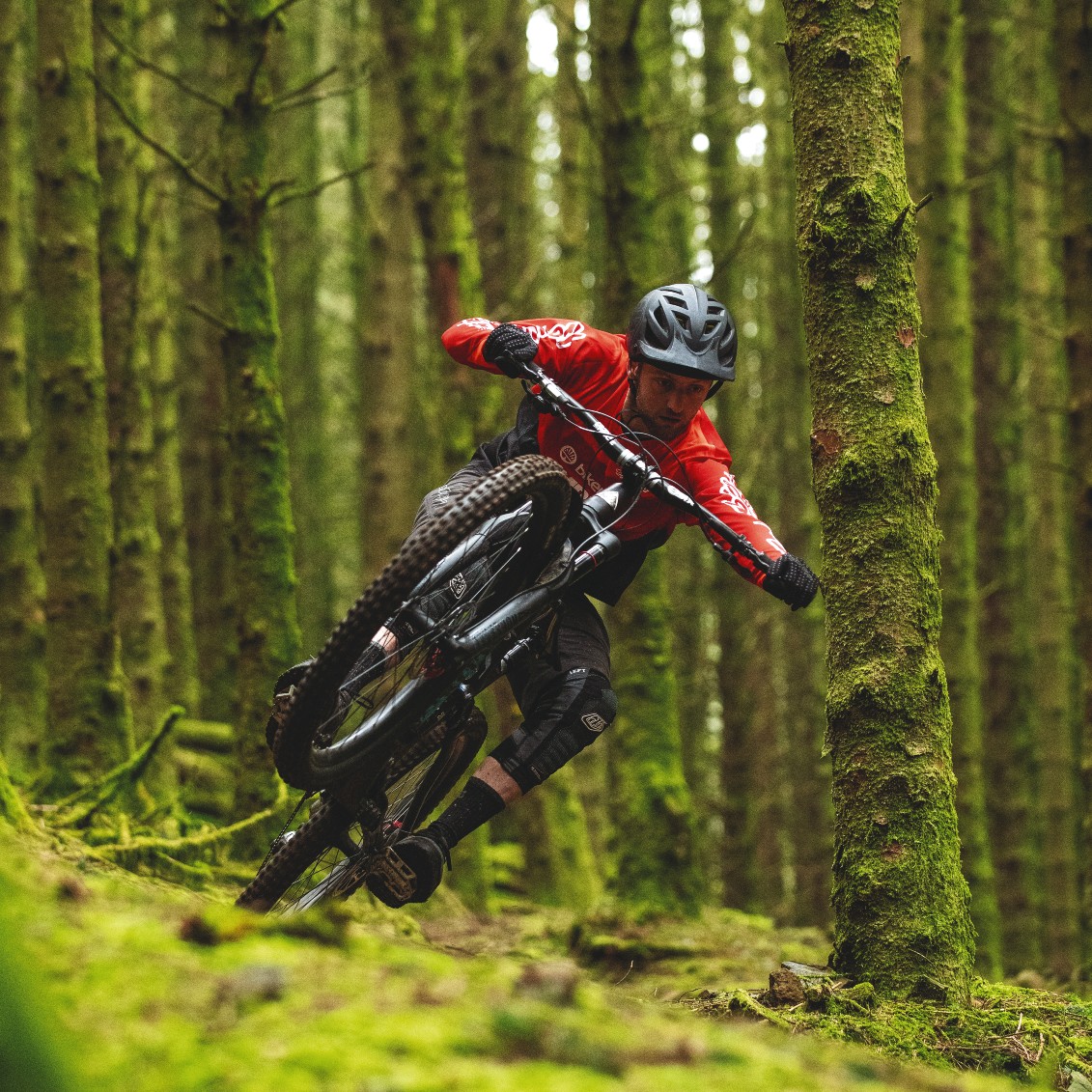Despite being made with meticulous attention to detail, Lancashire components brand Hope’s first bike, the HB160, was (by its own admission) slightly outdated by the time it hit the shops in 2017.
It’s cramped sizing and tall seat tube heights were two of our only complaints about an otherwise beautifully finessed package, so it’s with relief that we can say these aren’t issues with its new addition to the range, the HB130.
This 130mm travel, 29er is the second hand-built carbon bike to come out of Barnoldswick, and it’s a refinement of what Hope learned from its smaller wheeled, 160mm travel enduro rig.
Hope HB130 frame details
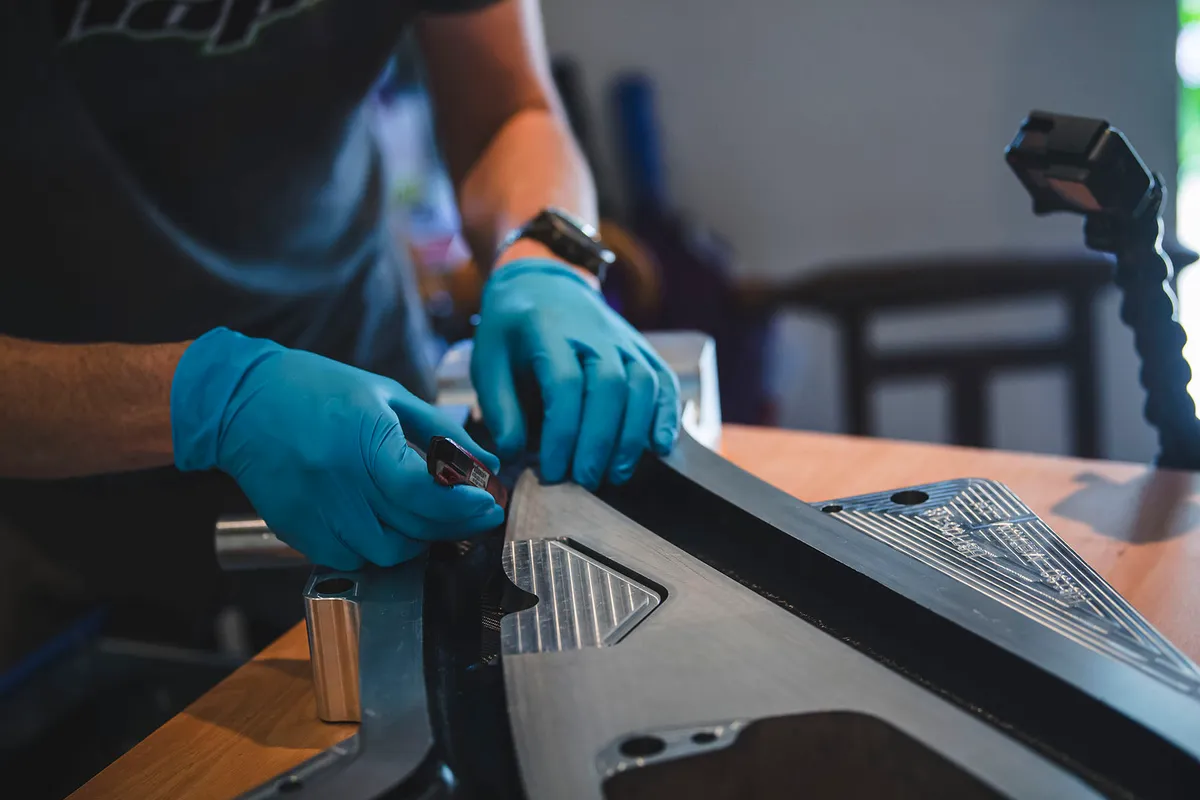
Unchanged from the HB160 is Hope’s ethos of manufacturing everything in house. This starts with machining the frame moulds, right through to laying-up the carbon by hand. A process that takes 16 hours per frame.
Three different carbon weaves go into the HB130: UD (uni-directional) and 3K fabrics provide the structural strength while a 1K external layer is used to give the frame its fine-woven finish.
Hope has opted to clear-lacquer rather than paint the frames to highlight the quality of the construction.
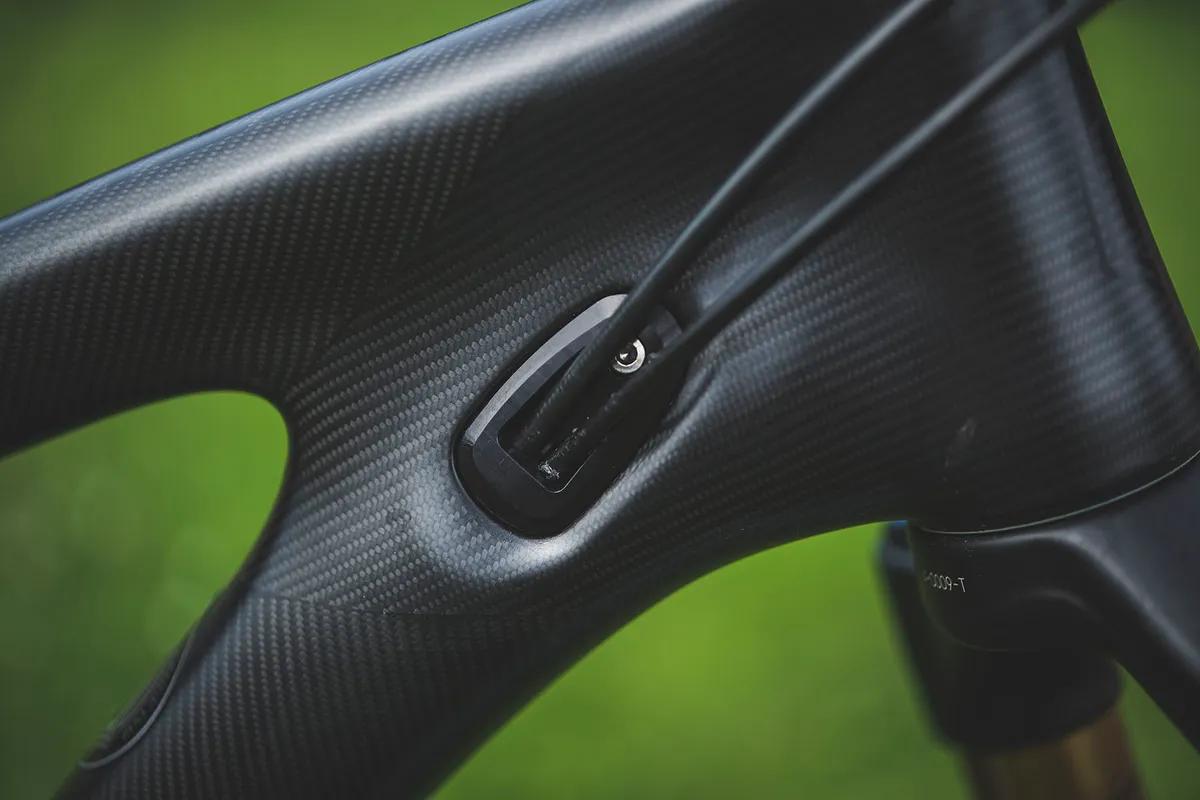
Although the front triangle is carbon, as with the HB160 the rear stays are CNC-machined from aluminium.
The seatstays comprise of a machined yoke and dropouts, which are then bonded to extruded triangular sections. Hope believes this is preferable over a standard welded construction because heat distortion is eliminated, and a 2014 alloy with a higher tensile strength and a longer fatigue life can be used.
The rocker link is made from machined aluminium too and it integrates a flip-chip for high/low geometry settings.
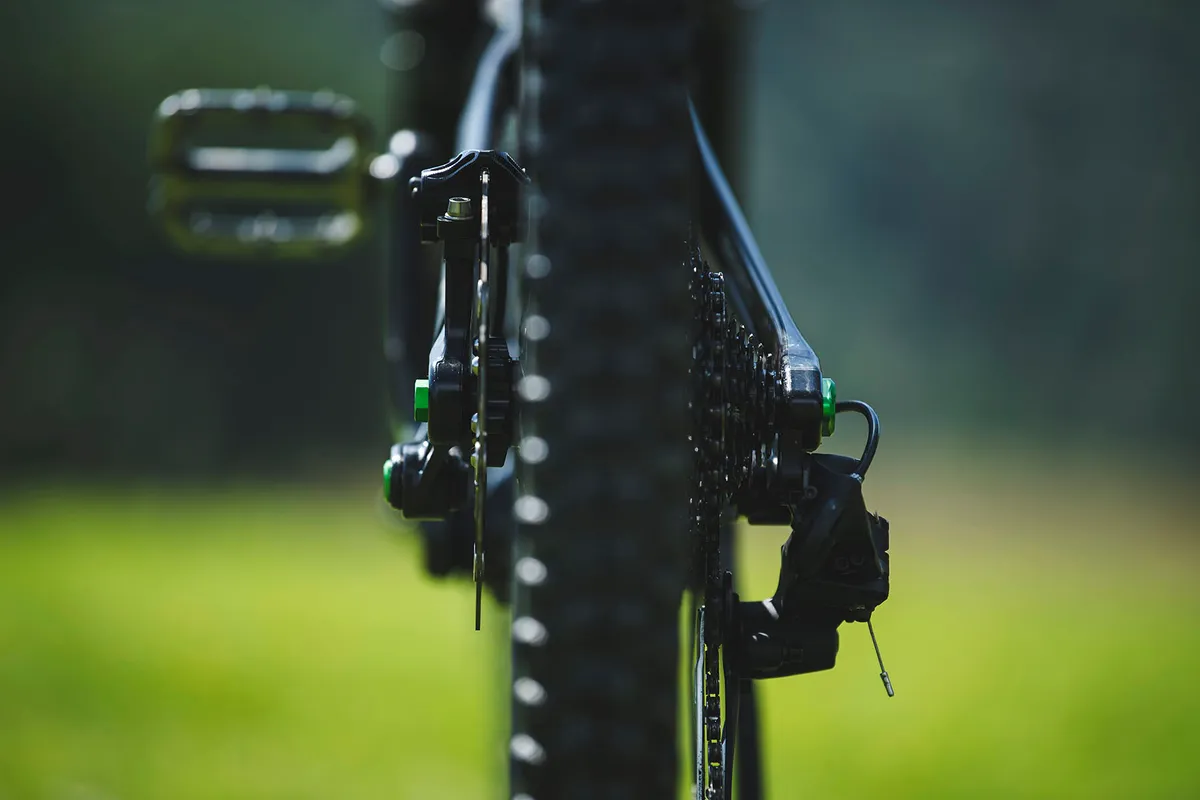
Interestingly, at the back is Hope’s 130mm rear hub spacing, which it has done not only to increase foot / obstacle clearance, but because it believes a symmetrical dish makes for a stronger wheel.
A 17mm bolt-thru axle is used to offset any reduction in stiffness, and both complete bikes and framesets come with suitably-sized Hope Pro 4 hubs.
Another proprietary component is the 46mm threaded bottom bracket, but before you start complaining about yet another new standard, this comes preinstalled into the frames. Replacement bearings can simply be pressed in when required, so maintenance should be painless.
A chainguide is neatly integrated into the chainstay pivot and on the front triangle all the cables are routed internally with machined aluminium entry ports. Unlike the HB160, the designers have left space for bottle mounts too, and they joke that this was the feature around which everything else had to fit!
Hope HB130 geometry
At present, the HB130 is only available in M, L and XL sizes. Hope is waiting to see if there is demand for a smaller size before committing to making moulds. The length of the frames has jumped up considerably from the HB160, with reach on the large size I tested sitting at 475mm (high setting).
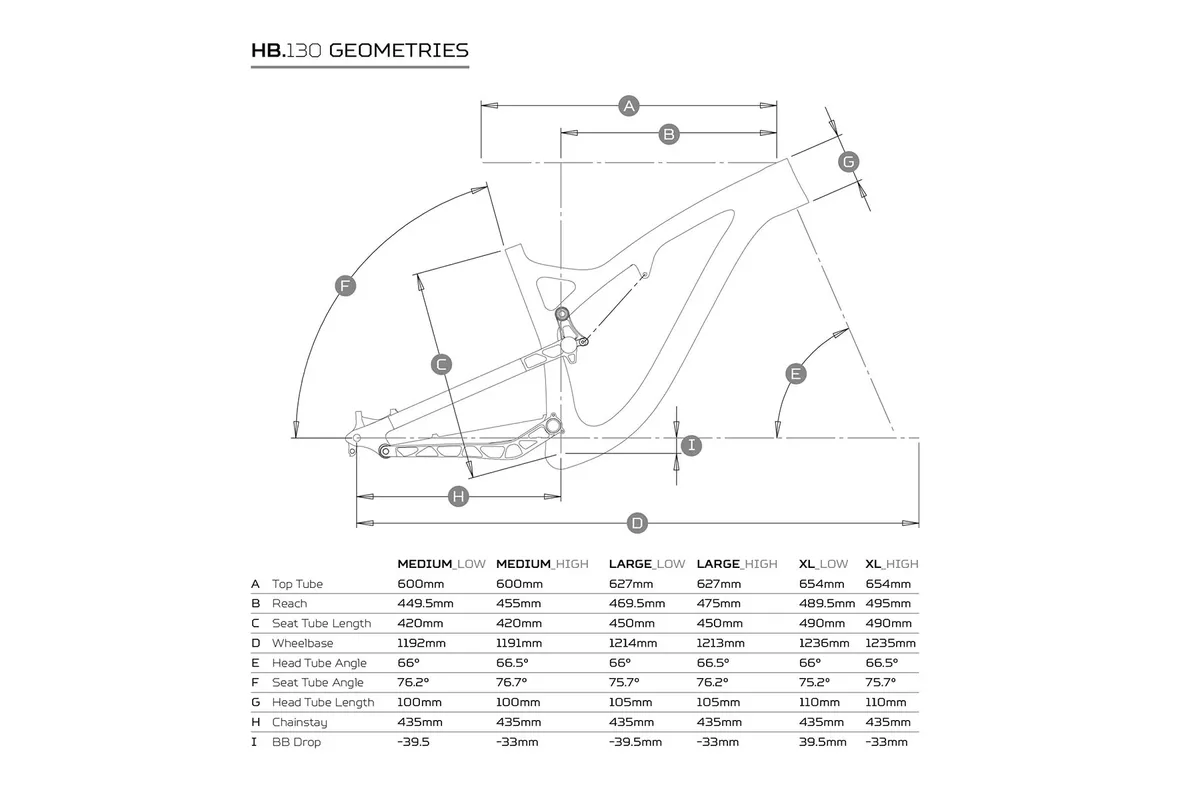
The XL size tops out at 495mm, so tall riders, or those with a preference for more extreme geometry, may still be left wanting, but thanks to short seat tube lengths across the whole range most riders will be able to upsize if they wish.
There’s extra scope for fine tuning too, with a choice of either 35 or 50mm stems on complete bikes. Another improvement over the HB160 is the angle of the seat tube, which has been steepened by around 2 degrees to aid climbing. Chainstays are fixed across the size range at an average 435mm.
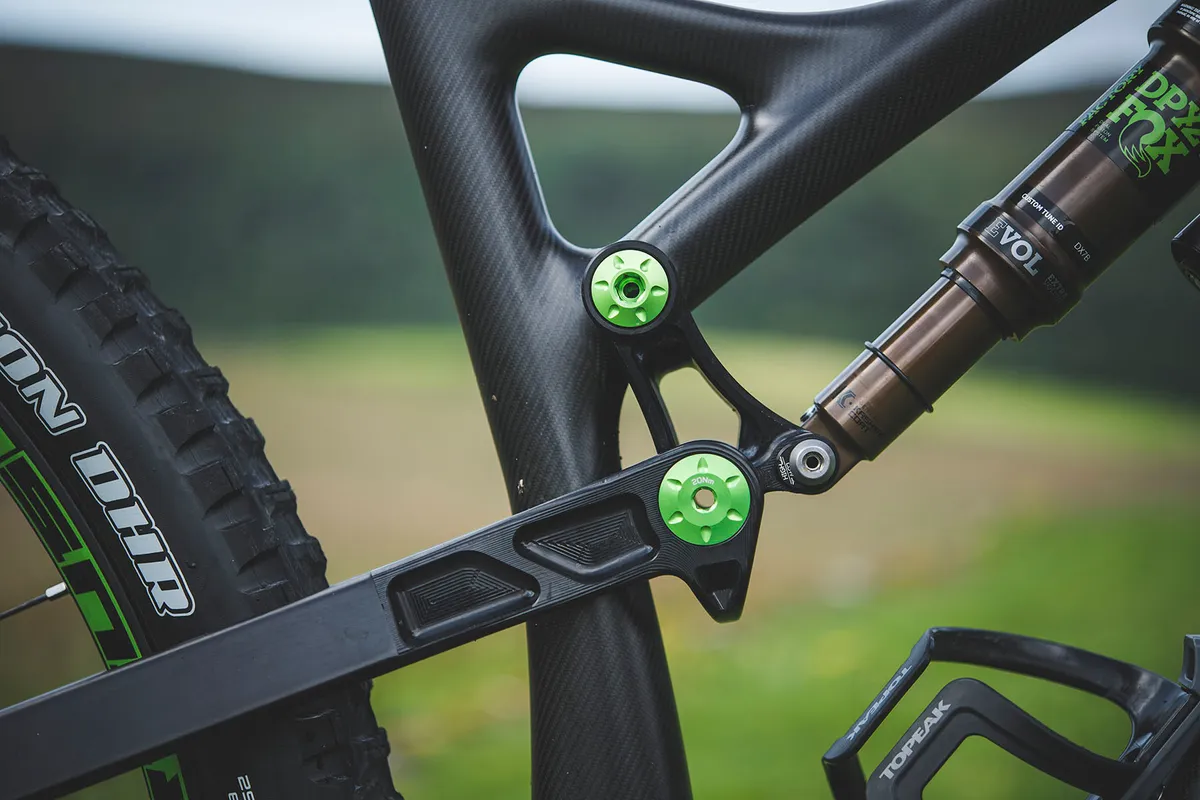
Thanks to the linkage flip-chip, bottom bracket drop is easily adjustable at the trail side, from 33 to 39.5mm, and this slackens out the 66-degree head angle by half a degree too. So, depending on the terrain or your riding style, you can opt for increased pedalling efficiency or more descending capability.
Hope HB130 suspension
The Horst link inspired design doesn’t stray far from what Hope has used previously, but with the HB130 it says that it has tweaked the kinematic for better pedalling.
A trait that I can certainly say I was impressed by during testing, finding few occasions that compelled me to twist the pedal platform lever on the shock.
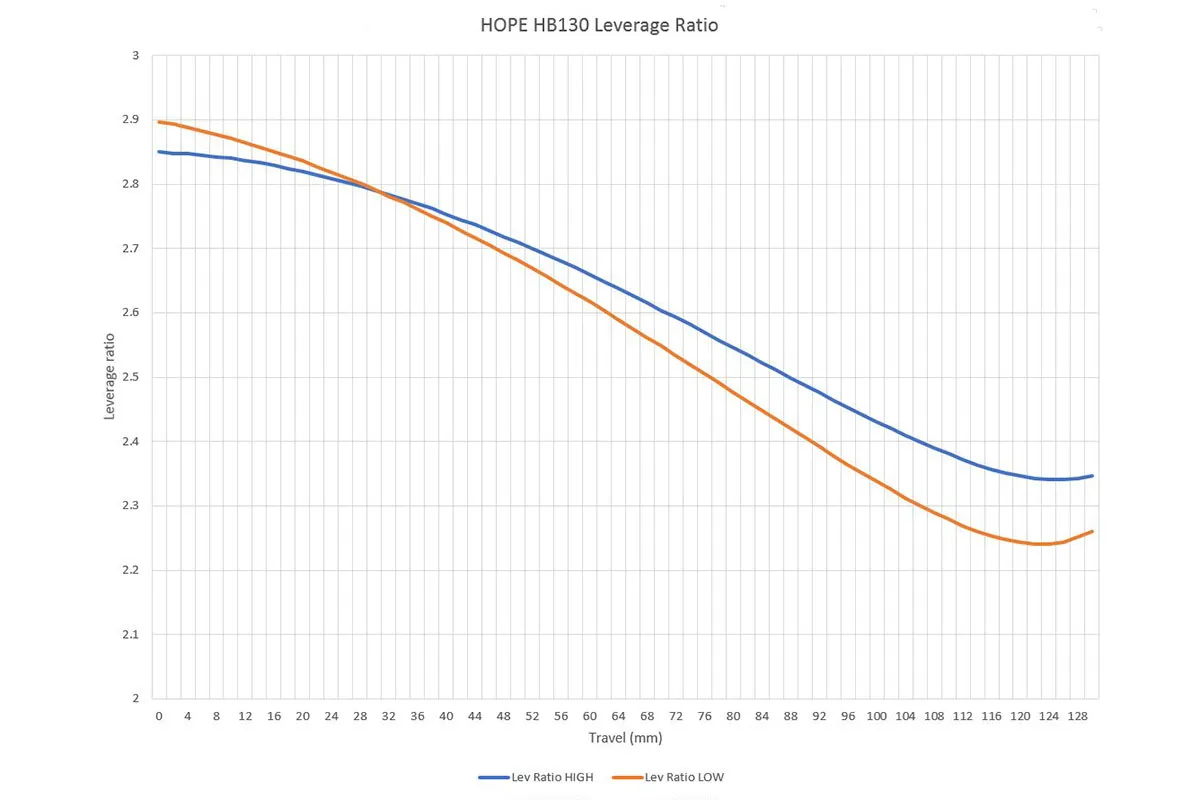
The leverage curve is progressive and slightly more so in the lower setting, which fits with the more aggressive geometry.
The HB130 takes a 210 x 50mm metric sized shock and you can select from either a Fox DPX2 or Ohlins TTX22 for the same price.
The bike is designed around a 140mm fork and again there is the choice of Fox or Ohlins.
Hope HB130 kit
Hope is offering the HB130 either as a complete bike or a frame kit, which comes with a shock and an assortment of its own parts (a pair of hubs, headset, seat clamp and bottom bracket).

As you’d expect, the complete bike comes fitted out with nearly a full suite of Hope componentry, with the exception of its EVO crankset, which is replaced by SRAM’s carbon XO1.
Apparently, this is because SRAM will only supply its Eagle 12-speed drivetrain if it’s used with the matching crankset.
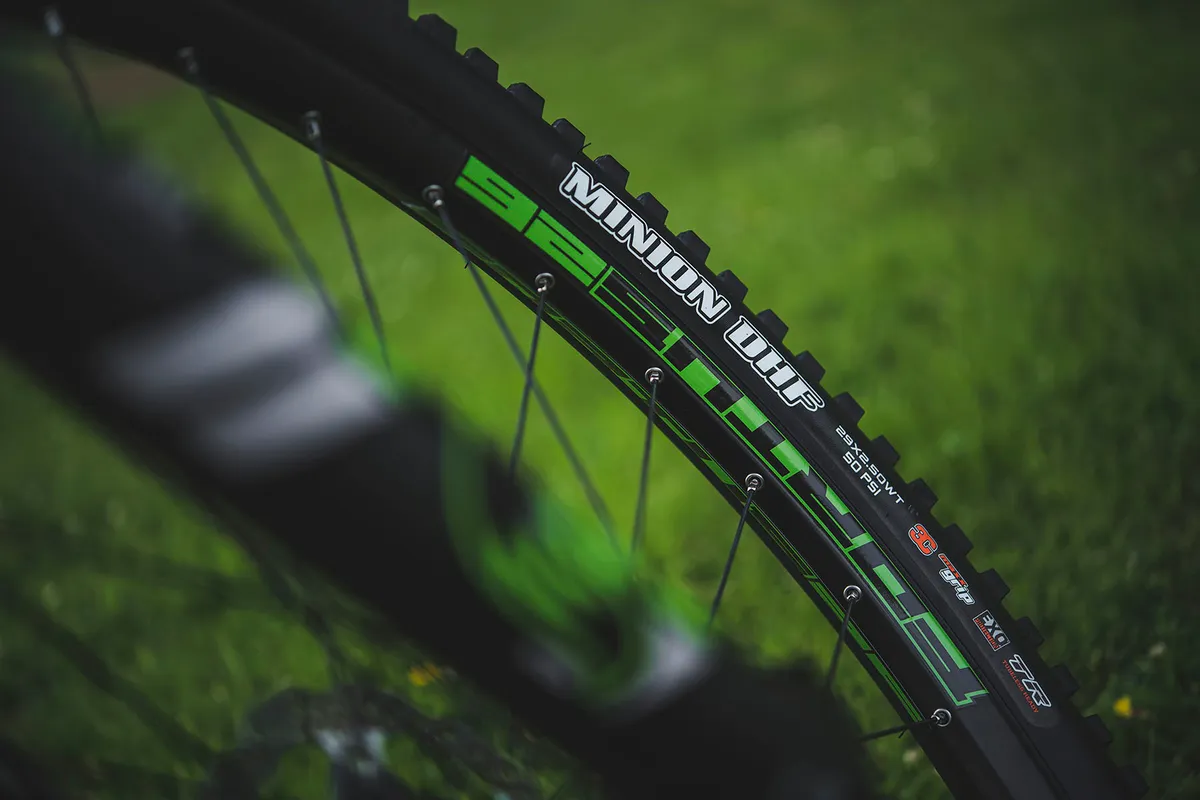
It’s worth noting that Hope is offering its own crank as an upgrade, conveniently priced to be slightly cheaper than the XO1 option. There’s plenty of scope elsewhere for customisation too, with a choice of rotor sizes on the Hope Tech 3 E4 brakes, and rim widths on Hope’s new Fortus wheelset.
For frame colour it’s raw carbon or raw carbon, but there are seven anodised colour options for the pivot bolts and parts, plus sticker kits to match. Go for stealth black, Hope team green or deck your bike out in a Lancashire hotchpotch of different colours.
Hope HB130 pricing
- Frameset: £3,950 /€4,700 / $4,950
- Full bike: £6,299 / €7,500 / $8,400
Hope HB130 first ride impressions
My testing ground for the HB130 was Ballater in the Scottish Highlands. The mix of natural and manmade trails turned out to be the perfect place to put a bike like this through its paces, with everything from gruelling steep climbs to fast rocky straights, harsh compressions and tight turns.
Instantly apparent was the HB130’s ease of eating up the elevation.
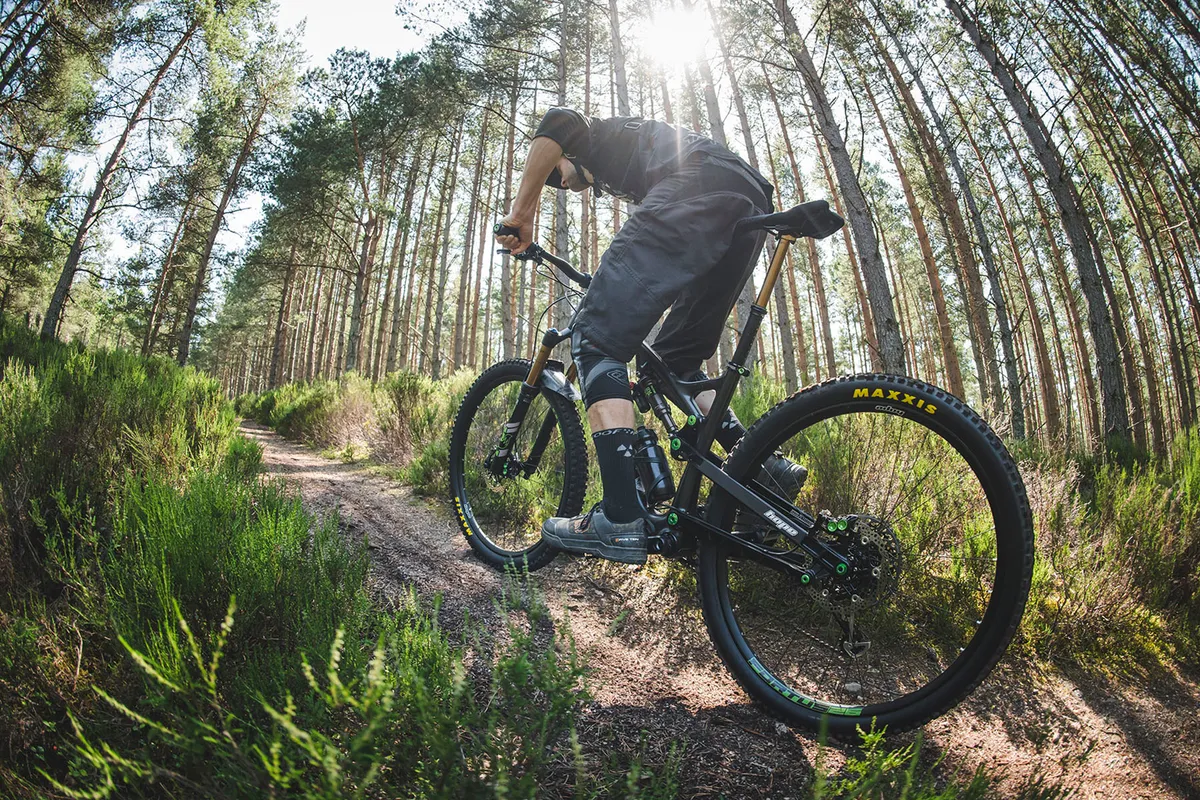
There is a small amount of pedal bob but I rarely felt compelled to use the shock’s pedal platform, and on the looser climbs left it open for more grip.
In the high geometry setting the bike definitely feels more trail than enduro, and the more upright stance will be great for mellower, longer distance days.
It’s still a plenty capable enough bike on the descents in this setting, but drop it down and it really comes alive.
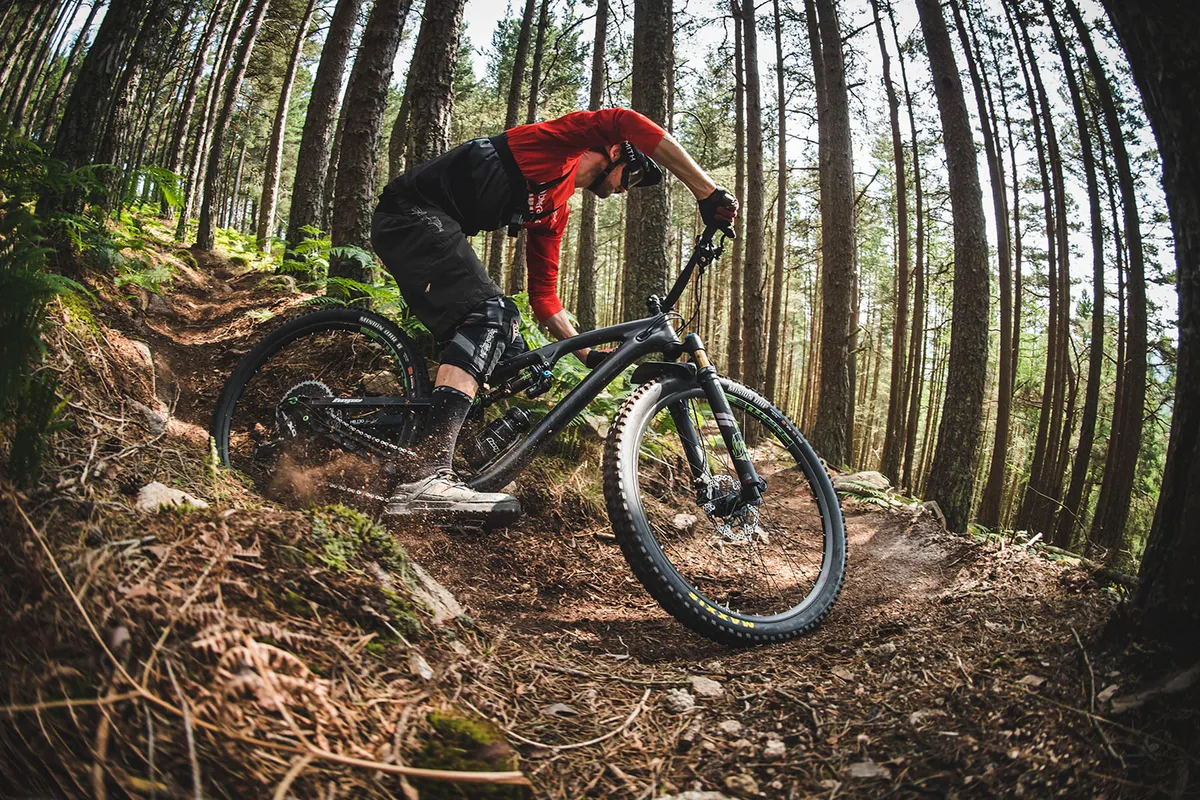
The stable ride position did at times tempt me to attack too hard though, and a few loose moments reminded me that bikes with this sort of travel do have limitations.
It’s not that the small bump sensitivity or progression are at fault, but with 130mm of travel you definitely can’t run as much sag as you’d like for optimum suppleness while still retaining the bottom-out resistance needed for really aggressive riding.
The thing is, the HB130 keeps urging you to ride it this hard!
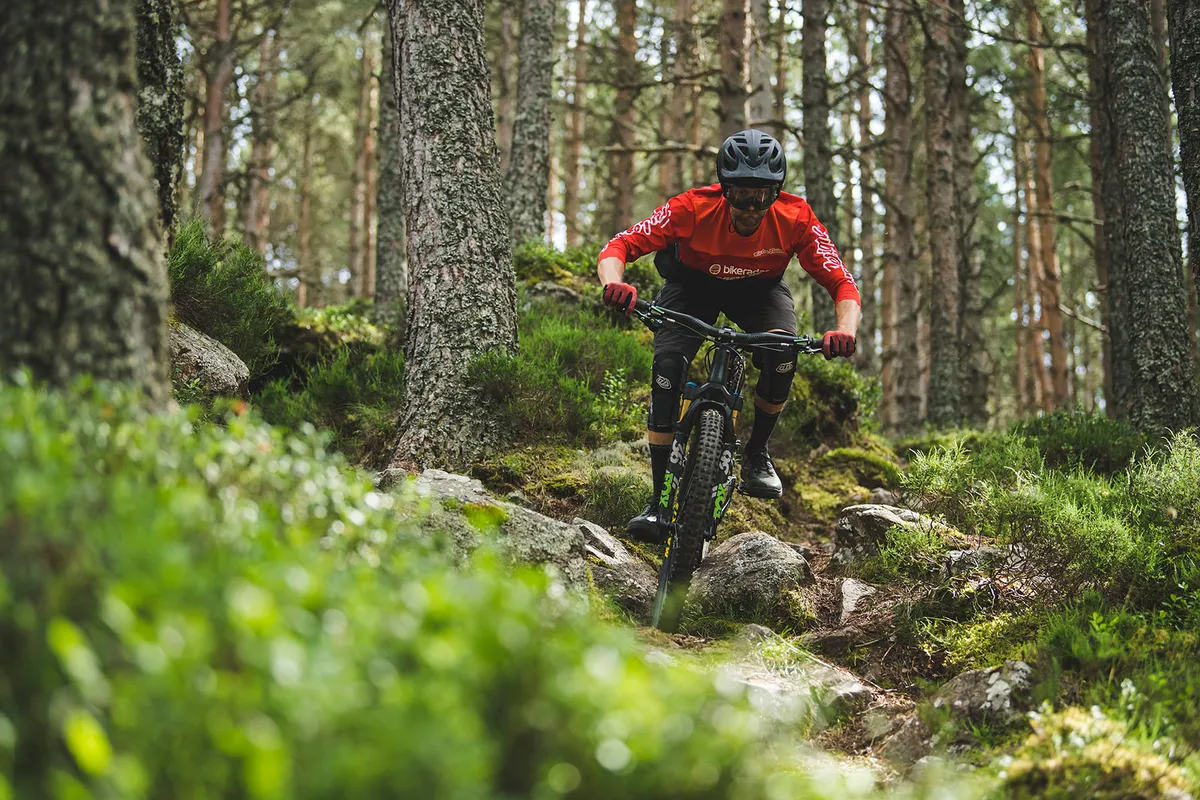
The rear end feels reassuringly solid and the powerful brakes, grippy rubber and well-damped Fox suspension all add to the confidence.
In Hope’s objective to make “the ultimate all-rounder” I reckon it's done a pretty good job. This is a jack of all trades trail bike that isn’t afraid of a bit of spice!
Product
| Brand | Hope |
| Price | €7500.00, £6299.00, $8400.00 |
Features
| Fork | Fox 36 Factory 140mm Grip 2, 44 Offset |
| Stem | Hope AM 35/50 |
| Chain | SRAM 12sp Eagle |
| Frame | HB.130 |
| Tyres | Minion DHF 2.5WT 3C Maxx Terra (F) / Minion DHR 2.3 3C EXO TR (R) |
| Brakes | Hope Tech 3 E4, 180 Rotors Hope Floating 180mm/180mm |
| Cranks | SRAM Carbon XO1 170/175 30T |
| Saddle | SDG Radar HB Logo |
| Wheels | Hope Pro4 Boost On Fortus 26 (F) / Hope HB Pro4 On Fortus 26 (R) |
| Headset | Hope HB.130 |
| Shifter | SRAM XO1 12sp |
| Cassette | SRAM Eagle XO1 10-50 |
| Seatpost | Fox Transfer 125mm/150mm |
| Grips/tape | Hope SL Black |
| Handlebar | Hope Carbon 780x20mm |
| Rear shock | Fox DPX2 Factory 3 Positon Factory Metric |
| Bottom bracket | Hope HB 30mm/Dub |
| Rear derailleur | SRAM XO1 12sp |
| Features | Space Doctor: Hope Head Doctor: Hope Grip Doctor: Hope Rotor Options: 160mm, 180mm, 200mm – Brake Mounts Will Be Required |
